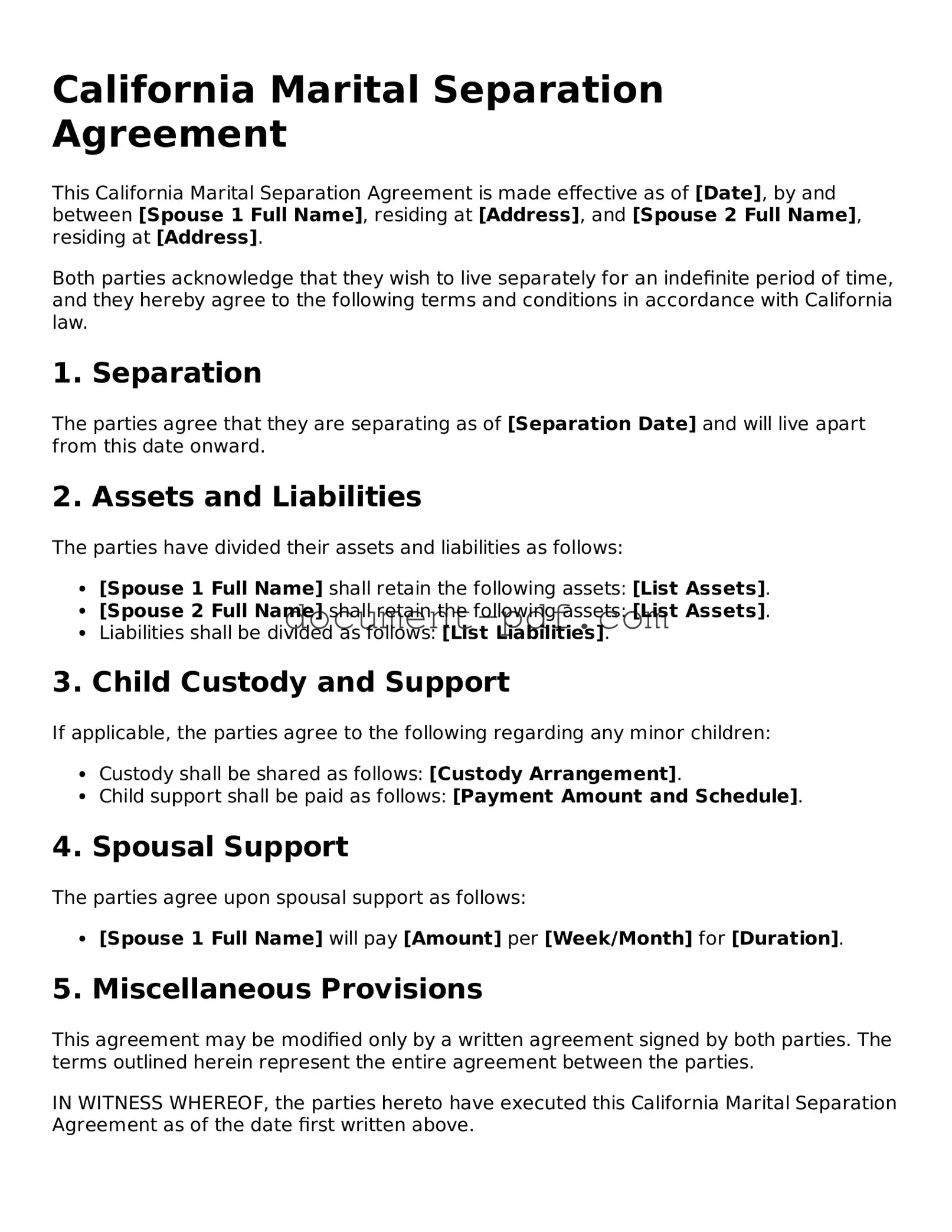The California Marital Separation Agreement is similar to a divorce settlement agreement. Both documents outline the terms of asset division, child custody, and support obligations. A divorce settlement is finalized when a couple decides to end their marriage, while a marital separation agreement can be used when couples choose to live apart without terminating the marriage. Both agreements aim to provide clarity and structure to the couple's responsibilities and rights during a period of transition.
Another document that bears similarity is the child custody agreement. This agreement specifically focuses on the arrangements made for the care and upbringing of children following a separation or divorce. Like the marital separation agreement, it addresses custody, visitation rights, and child support. It is crucial for ensuring that the best interests of the children are prioritized and that both parents are clear on their roles and responsibilities.
The property settlement agreement is also comparable. This document delineates how marital property will be divided between spouses. In both the marital separation agreement and the property settlement agreement, the goal is to achieve an equitable distribution of assets and debts. This helps prevent disputes over property and ensures that both parties understand their financial obligations moving forward.
A prenuptial agreement shares similarities with a marital separation agreement in that both documents address the division of assets and responsibilities. A prenuptial agreement is created before marriage, while a marital separation agreement is developed during or after a marriage. Both serve to protect individual interests and clarify expectations regarding financial matters, thereby reducing potential conflicts in the future.
The cohabitation agreement is another relevant document. This agreement is often used by couples who live together but are not married. Similar to the marital separation agreement, it outlines the rights and responsibilities of each party regarding property, finances, and other shared matters. Both agreements aim to provide a clear framework for the relationship, particularly in the event of a separation.
The legal separation agreement is closely related to the marital separation agreement. While both documents allow couples to live apart, a legal separation agreement is often filed with the court, making it legally binding. This document covers similar topics such as child custody, support, and property division, ensuring that both parties have a clear understanding of their rights and obligations during the separation period.
The postnuptial agreement is another document that resembles the marital separation agreement. This agreement is created after marriage and addresses similar issues, such as asset division and financial responsibilities. Like the marital separation agreement, a postnuptial agreement can help couples clarify their expectations and protect their interests, especially in the event of a future separation or divorce.
The parenting plan is also akin to the child custody agreement and is often part of the marital separation agreement. This document outlines how parents will raise their children after separation, covering aspects such as living arrangements, visitation schedules, and decision-making authority. Both documents focus on the well-being of the children and aim to foster a cooperative parenting relationship.
The financial disclosure form is similar in purpose to the financial aspects of the marital separation agreement. This document requires both parties to disclose their financial information, including income, assets, and debts. Transparency is essential in both cases, as it allows for a fair and informed division of property and financial responsibilities during a separation or divorce.
When considering end-of-life planning, individuals in Texas should also look into the Texas Last Will and Testament, a crucial legal document that details how assets will be distributed after death. It allows individuals to ensure their wishes are honored concerning property and dependents, while providing peace of mind in a challenging time. For those seeking a straightforward way to create this important document, Texas PDF Templates offers fillable forms that can streamline the process.
Finally, the divorce decree is a formal document issued by the court that finalizes the divorce process. While it serves as the conclusion of a marriage, it often incorporates terms from the marital separation agreement, especially regarding child custody and property division. Both documents aim to ensure that all aspects of the relationship are addressed, providing a clear resolution to the couple's legal and financial obligations.
